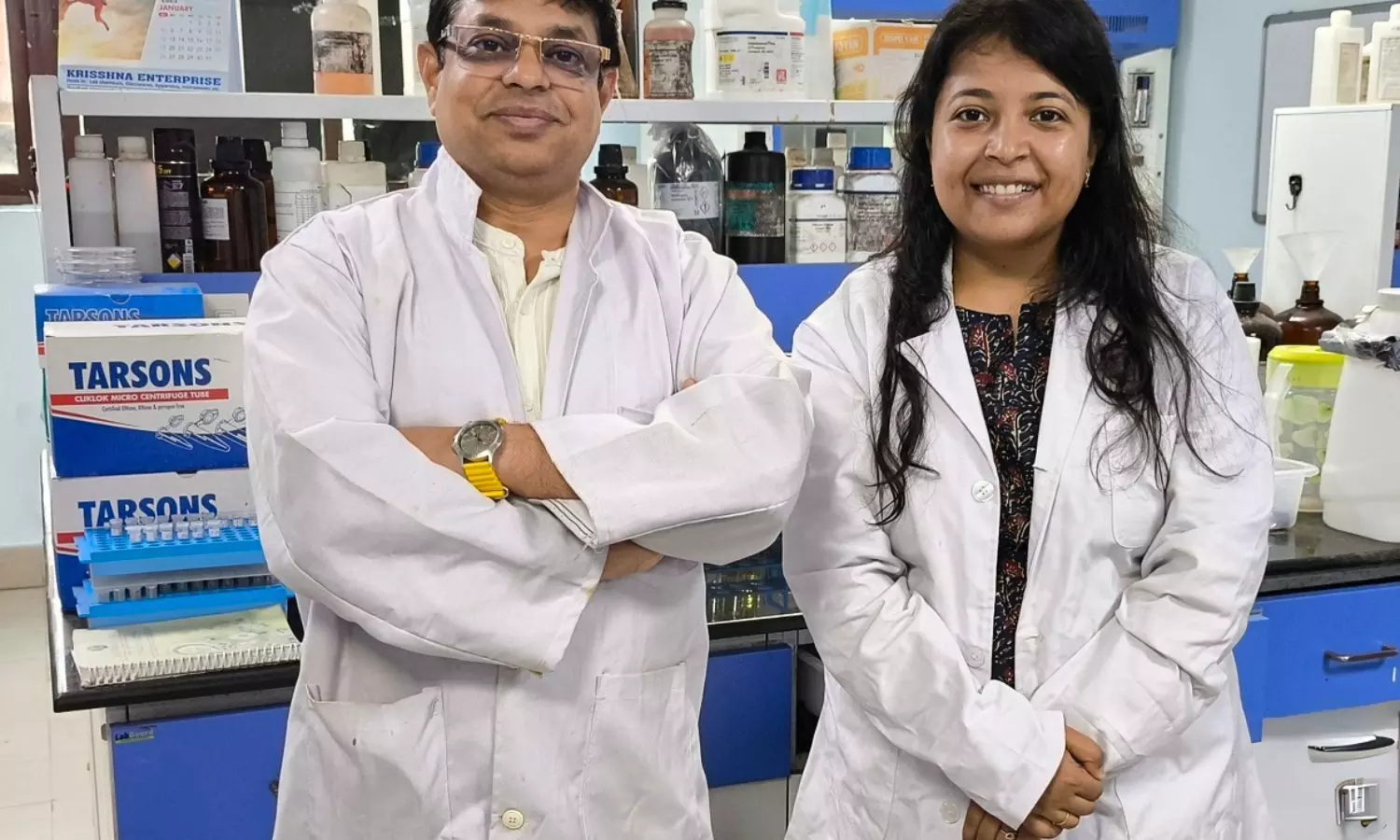Nanosensor Developed at IIT Guwahati Enables Instant Detection of Cancer-Causing Water Pollutants

GUWAHATI: Indian Institute of Technology Guwahati Researchers have developed a novel sensor from milk protein and thymine that can detect Mercury and tetracycline antibiotics contamination in water.
Led by Prof. Lal Mohan Kundu, Professor, Department of Chemistry, along with his research scholars, Ms. Pallabi Paul, and Ms. Anushka Chakraborty, the developed sensor uses carbon dots and Ultraviolet lights.
With rapid urbanisation, industrial activities, and overuse of pharmaceuticals, water contamination is becoming a pressing issue, putting ecosystems and human health at risk worldwide.
Tetracyclines are a class of antibiotics commonly used for pneumonia and respiratory infections. If it is not disposed of properly, it can easily enter the environment, contaminating the water, which can result in antibiotic resistance and other health hazards.
Similarly, Mercury, in its organic form, can cause cancer, neurological disorders, cardiovascular disease and other life-threatening conditions.
Detecting these pollutants accurately and quickly is essential to protect both water quality and public health.
To address this challenge, the IIT Guwahati research team has created a nanosensor, a sensor built from extremely small materials that are a few billionths of a meter in size.
The developed sensor uses carbon dots that glow under ultraviolet light. In the presence of harmful substances such as Mercury or tetracyclines, the glow of these carbon dots dims, providing a quick and visible signal of contamination.
Speaking about the developed nanosensor, Prof. Lal Mohan Kundu, Professor, Department of Chemistry, IIT Guwahati, said, “Detection of pollutants such as Mercury and antibiotics is important, not only in water but also in biological fluids. Mercury is highly carcinogenic. Excess antibiotics also pose adverse health consequences.
This sensor can detect Mercury and tetracyclines at a very low concentration. We have been working with carbon dots for some time now. For this project, my research scholar Pallabi and Master’s student Anushka synthesised the carbon dots from low-cost and biogenic precursor milk protein and thymine, a nucleobase.
The sensor may also be used in biological systems. We chose carbon dots because of their nanoscale dimensions and inherent fluorescence property. This makes it a highly sensitive technique.”
On a laboratory scale, the developed sensor has demonstrated accurate results with a measurable dimming of its glow within less than 10 seconds of meeting harmful contaminants. The sensor is extremely sensitive in mercury detection with just 5.3 nanomolar (1.7 parts per billion), which is below the safety standards set by the U.S. Environmental Protection Agency, and 10 – 13 nanomolar for Tetracycline antibiotics.
To ensure its versatile utility, the researchers have tested the sensor in a variety of environments, such as tap and river water, milk, urine, and serum samples. To enable quick and on-the-spot testing, the research team has coated the developed sensor in simple paper strips which can easily detect water contamination using an ultraviolet lamp.
The findings of this study have been published in the prestigious journal Microchimica Acta, in a paper co-authored by Prof. Lal Mohan Kundu.
The novel sensor developed by the IIT Guwahati research team not only provides a low-cost and highly accurate alternative to conventional water testing, but its biocompatibility also holds the potential for broader biomedical applications in the future.
Disclaimer: The research described in this release is at a laboratory stage. The findings are subject to further validation and should not be interpreted as final or ready for commercial application.


